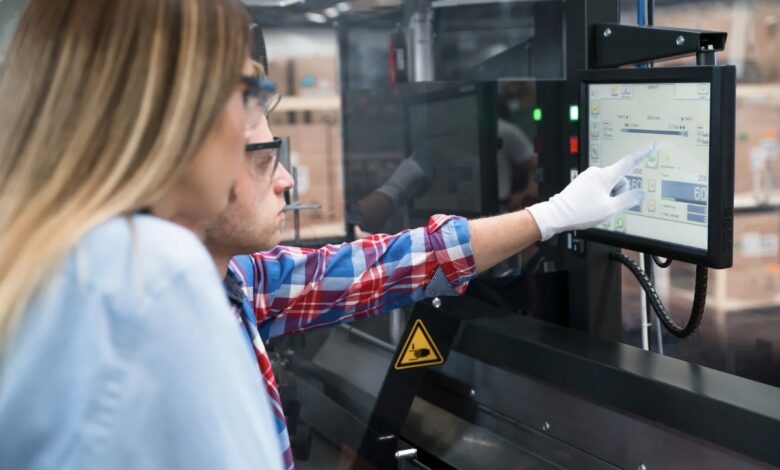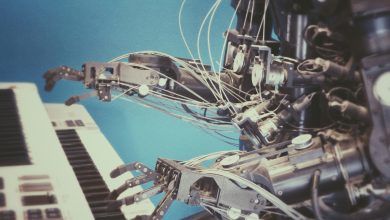
Climate risk brings a host of environmental challenges that can throw even the best-planned supply chains off course.
Extreme weather events, unpredictable precipitation patterns, and shifting temperatures can impact agriculture, production, and distribution. In fact, recent studies show that climate-related disruptions have surged by over 30% in the past decade, creating serious hurdles for everyone along the food supply chain, from farmers to manufacturers, restaurants and consumer packaged goods (CPG) companies.
In this climate of uncertainty, AI has become a trusted ally, helping companies predict disruptions and build more robust, flexible, and responsive systems. By analyzing historical weather data alongside real-time environmental inputs, these systems help companies get ahead of climate-induced disruptions and keep operations running smoothly. It’s why the global AI market in supply chain management is projected to hit $10 billion by 2028.
In addition to weather-related disruptions, climate risk also introduces longer-term shifts that can be harder to detect—such as changes in growing seasons, soil degradation, or water scarcity. These slower-moving challenges can quietly undermine entire sourcing strategies over time. AI plays a key role in surfacing these less-visible risks, helping businesses adjust procurement, logistics, and production plans before they are forced to react under pressure.
AI Applications in Supply Chain Management
Not too long ago, companies relied on basic forecasting tools that used only historical data, which couldn’t capture today’s dynamic climate conditions. Now, advanced AI systems continuously learn and adapt, leading to a transition from reactive to predictive supply chain management—a shift that has proven to be a real game changer.
Innovations in natural language processing (NLP) and computer vision have also been critical in this transformation. NLP allows companies to sift through vast amounts of unstructured data—ranging from weather patterns and crop yields, to news reports and market trends—to pick up early signals of potential disruptions. Meanwhile, computer vision processes imagery to detect subtle signs of crop damage or other issues long before they become obvious. Together, these technologies offer more precise and actionable insights than ever before, moving the industry well beyond traditional risk management models
The outcome? Greater operational efficiency and less downtime when unpredictable climate events occur.
This transition is already being felt at the operational level. For instance, AI-powered scheduling tools are helping manufacturers dynamically reroute shipments in response to real-time transportation bottlenecks caused by weather events. Likewise, warehouse automation systems are leveraging predictive inputs to better manage inventory levels during supply shocks, avoiding both overstock and stockout scenarios.
Another major benefit of AI is its role in risk monitoring and mitigation. Sensors and Internet of Things (IoT) devices placed throughout the supply chain feed data into smart systems that can instantly flag anomalies and recommend corrective actions. This proactive approach has helped companies cut losses by nearly 20% during supply disruptions. It’s a shift from the old reactive strategies to a dynamic, always-on model of managing risk.
For example, one well-known global food company leverages AI-driven analytics to predict prices and forecast harvest yields. This approach has not only provided actionable insights that guide decisions on resource allocation, but has also saved them 15% in their overall cost of goods sold.
More companies are also embedding AI into their procurement functions. Algorithms can evaluate supplier reliability under different climate stress scenarios and recommend diversification strategies to reduce dependency on high-risk regions. As a result, procurement teams are evolving from cost optimizers to strategic partners in resilience planning.
Looking Ahead: The Next Five Years
As computational capabilities continue to grow and algorithms become more sophisticated, we can expect even greater precision in predicting climate risks. Researchers are already exploring ways to integrate diverse data streams—such as environmental sensors, satellite imagery, and even real-time social media data—into a unified risk management framework. This kind of integration could revolutionize the food industry by offering a holistic view of potential disruptions.
One of the most promising developments on the horizon is the potential for greater collaboration across the entire supply chain. Cloud-based platforms and blockchain technology may soon enable suppliers, manufacturers, and distributors to share real-time data seamlessly. This kind of collaboration would allow for faster, more coordinated responses during climate emergencies and set new standards for supply chain management. Imagine a world where every link in the chain is connected and can adapt instantly to changing conditions—that’s the future we’re heading toward.
Greater regulatory pressure may also shape this future. Governments are starting to mandate climate risk disclosures, and companies that use AI to anticipate and document these risks will be better positioned to comply. In parallel, consumer expectations around sustainability are rising, and companies able to demonstrate climate-resilient sourcing will gain a competitive advantage.
Advances in AI are also set to bring more personalized and localized solutions to the table. Food manufacturers might soon be able to tailor their supply chain strategies to the specific climate conditions of their regions. By doing so, they can optimize production and distribution in real time, enhancing overall system resilience. In addition, the concept of digital twins—virtual replicas of physical supply chains—will likely become indispensable.
These digital models allow companies to experiment with different scenarios and test responses to various climate risks without disrupting their actual operations.
The Road Ahead: Embracing a Data-Driven Future
It’s clear that AI isn’t just a tool for boosting efficiency—it’s becoming a strategic asset for navigating the complexities of modern supply chains. Companies that embrace a data-driven mindset are better equipped to handle the unpredictable challenges posed by climate risk. The continuous flow of data from IoT devices, sensors, and other sources provides a steady stream of insights that can inform smarter decision-making.
Over the next few years, leaders in the CPG and food manufacturing sectors will need to invest not just in AI tools, but in the underlying data infrastructure and organizational alignment that makes those tools effective. This includes training teams to act on AI-driven insights and building governance frameworks that ensure transparency and accountability in automated decision making. It also means viewing AI not as a bolt-on feature, but as a foundational layer of a new, climate-resilient supply chain architecture.
Those who move early will not only reduce risk, but gain a strategic edge in a more volatile and climate-conscious global market. This isn’t just about staying afloat during a crisis; it’s about building a food system that is resilient, adaptive, and ready for the future.




